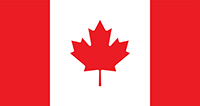We have another insightful article from Megan Cooper of Real Life Home.net. We all look forward to our retirement, but is it as easy a transition to settle into as we think? - Let's consider the following points - Thank you Megan!
Retirement often signals a new chapter — perhaps in a cozier home, a different neighbourhood, or nearer to loved ones. Yet even the most exciting move can feel unfamiliar and a little overwhelming at first. The encouraging part is that with a mix of planning, familiar routines, and a few personal touches, you can turn your new space into a warm, comfortable, and truly welcoming home within just a few short weeks.
To settle comfortably after a post-retirement move:
Start small — unpack essentials first.
Establish familiar routines immediately.
Join community groups early.
Create cozy, functional zones.
Set up a stress-free workspace if you’re consulting part-time.
Make time to explore and personalize.
The Emotional Reset: Rebuilding Routine and Familiarity
Moving later in life involves more than boxes — it’s about continuity. Maintaining elements of your old routines creates comfort and stability.
● Recreate your morning ritual from day one.
● Keep cherished objects — like your favourite chair or photos — visible early.
● Schedule regular calls or visits with old friends to maintain social continuity.
📖 Resource: Read how routine continuity helps reduce stress after life transitions at Verywell Mind.
Quick-Start Checklist for Your First Week
Use this checklist to get comfortable fast:
Task Why It Matters Tips
Unpack the kitchen Familiar smells + easier meals Start with your coffee setup
Set up your bedroom Sleep quality = emotional regulation Use familiar bedding
Update your address Avoid missing pension/benefit mail Use Canada Post’s
Explore the neighbourhood Orientation reduces stress Visit the local library or market
Meet one neighbour Builds immediate belonging A simple hello works wonders
How to Build Community Comfortably
Social belonging accelerates emotional settling. Canada offers many opportunities for post-retirement connection:
● Join a hobby club — painting, walking, or book discussions through Active Aging Canada.
● Volunteer — through local chapters of Volunteer Canada.
● Engage with recreation centres for seniors; many municipalities have directories online.
● Use Facebook or Meetup to find local groups in your area.
💡 Pro Tip: Schedule one “community touchpoint” per week — a class, lunch, or volunteer shift — to build a consistent rhythm.
Designing a Stress-Free Home Office
Even in retirement, many Canadians choose part-time consulting, mentoring, or creative work. A small, well-planned workspace can make this transition smoother.
To create a calm, energizing space:
● Choose natural light and ergonomic seating.
● Add plants or flowers for a touch of vitality.
● Keep your schedule consistent — working the same hours daily maintains discipline.
● Incorporate breaks for light stretching or short walks.
How-To: Personalize Your Space Quickly
Step 1: Unpack sentimental items early.
Step 2: Assign a “joy zone” — a nook for reading, crafting, or reflection.
Step 3: Add layers of comfort — soft lighting, textures, and scents.
Step 4: Display achievements or memories proudly; they anchor identity.
Step 5: Don’t rush — allow your home’s character to evolve organically.
🖼️ Check out Canadian Living’s Home Inspiration section for décor ideas.
Energy, Health & Movement
Settling into a new home also means settling into a new body rhythm.
● Keep walking routes mapped and ready — tools like AllTrails Canada make it easy.
● Try gentle yoga or tai chi for flexibility and balance.
● If you’re downsizing, use compact fitness tools like resistance bands or balance boards.
● Stay hydrated — unpack your water bottles first!
💬 See Heart & Stroke Canada for guides on staying active safely after retirement.
Practical Checklist for Month One
● Register with a new family doctor if you’ve moved provinces.
● Locate the nearest pharmacy and grocery store.
● Set up automatic utility payments.
● Organize tax and pension files.
● Test smoke and CO alarms.
● Review local transit or senior ride-share options.
Product Highlight: Comfort Meets Mobility
If your new home includes stairs or uneven flooring, lightweight folding walkers or ergonomic canes can be life-changing for balance and confidence. You can explore reputable, safety-tested options through Wellwise, which specializes in mobility and wellness aids for Canadians.
Glossary
Downsizing: Moving to a smaller or more manageable home after retirement.
Community integration: Actively participating in local activities to build social belonging.
Ergonomics: The science of designing spaces for physical comfort and efficiency.
Routine continuity: Keeping consistent daily habits to reduce stress during transitions.
Joy zone: A personalized area designed purely for comfort or creativity.
FAQ
Q: How long does it take to feel at home after moving?
Most retirees report feeling settled within three to six months once routines are reestablished.
Q: What if I moved to a different province?
Update health cards and driver’s licenses promptly via your provincial service centre.
Q: How do I meet people quickly?
Start with low-commitment social spaces — community centres, local cafés, or church socials.
Q: How can I make unpacking less overwhelming?
Tackle one category per day: kitchen → clothing → documents → sentimental items.
Settling into your new home after retirement isn’t about speed — it’s about rhythm. By creating familiar anchors, joining your local community, and nurturing personal comfort, you transform your space into a sanctuary. In a few short weeks, the unfamiliar becomes yours — lived in, loved, and entirely home.
